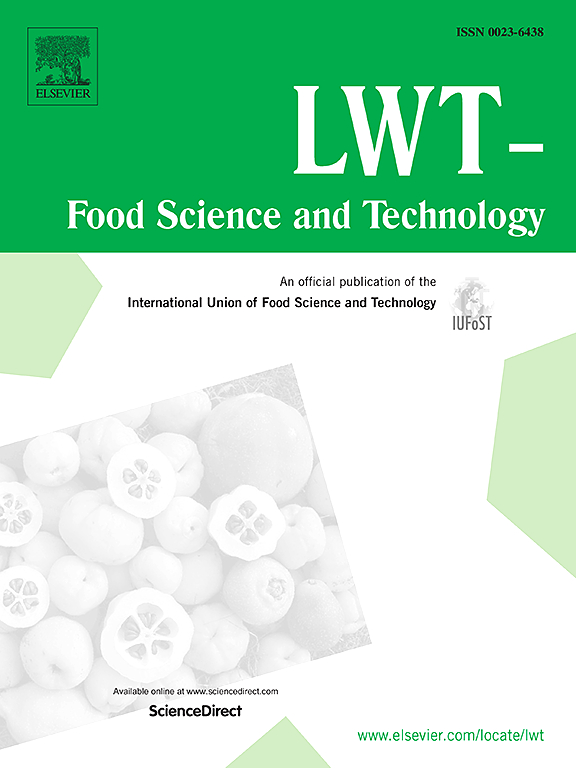通过调控模型驱动的工业发酵过程关键参数优化提升小曲清香行白酒品质
IF 6.6
1区 农林科学
Q1 FOOD SCIENCE & TECHNOLOGY
引用次数: 0
摘要
小曲清香行白酒酿造从传统生产过渡到自动化生产后,面临着白酒中主要风味物质含量低、高度酒含量高的挑战。本研究在优化糖化发酵剂用量的同时,对传统车间(TW)和自动化车间(AW)的环境因素和九陂微生物进行了研究。结果表明,乳酸杆菌和葡萄球菌是两个车间环境中的主要微生物群落,其中 AW 环境中的微生物丰度高于 TW 环境。在九陂,乳酸杆菌和魏氏菌是优势微生物。不过,TW 的微生物丰富度高于 AW。本研究还引入了一种调节模式:当添加 6.1‰的产酯酵母、8.3% 的大曲和 5.8‰的小曲时,总酸含量达到 0.58 克/升,总酯含量为 1.09 克/升,高醇含量降至 1.85 克/升。这些调整成功地实现了 "减少杂质、提高质量 "的目标,从而提高了白酒的整体质量。本文章由计算机程序翻译,如有差异,请以英文原文为准。
Improving the quality of Xiaoqu Qingxiangxing Baijiu through optimization of key parameters in industrial fermentation processes driven by regulation models
After the transition of Xiaoqu Qingxiangxing Baijiu brewing from traditional to automated production, the process faced challenges such as low levels of key flavor substances and high levels of higher alcohols in Baijiu. In this study, the environmental factors and Jiupei microorganisms in traditional workshops (TW) and automated workshops (AW) while also optimizing the dosage of saccharification fermentation agents. The results demonstrated that Lactobacillus and Staphylococcus were the dominant microbial communities in the environment of both workshops, with the AW environment exhibiting higher microbial abundance than that of the TW. In the Jiupei, Lactobacillus and Weissella were the dominant microorganisms. However, microbial richness was higher in the TW than in the AW. This study also introduced a regulation model: when 6.1‰ ester-producing yeast, 8.3% Daqu, and 5.8‰ Xiaoqu were added, the total acid content reached 0.58 g/L, total ester content was 1.09 g/L, and higher alcohols levels were decreased to 1.85 g/L. These adjustments successfully achieved the goal of "reducing impurities and improving quality," leading to an improvement in the overall quality of Baijiu.
求助全文
通过发布文献求助,成功后即可免费获取论文全文。
去求助
来源期刊

LWT - Food Science and Technology
工程技术-食品科技
CiteScore
11.80
自引率
6.70%
发文量
1724
审稿时长
65 days
期刊介绍:
LWT - Food Science and Technology is an international journal that publishes innovative papers in the fields of food chemistry, biochemistry, microbiology, technology and nutrition. The work described should be innovative either in the approach or in the methods used. The significance of the results either for the science community or for the food industry must also be specified. Contributions written in English are welcomed in the form of review articles, short reviews, research papers, and research notes. Papers featuring animal trials and cell cultures are outside the scope of the journal and will not be considered for publication.
 求助内容:
求助内容: 应助结果提醒方式:
应助结果提醒方式:


